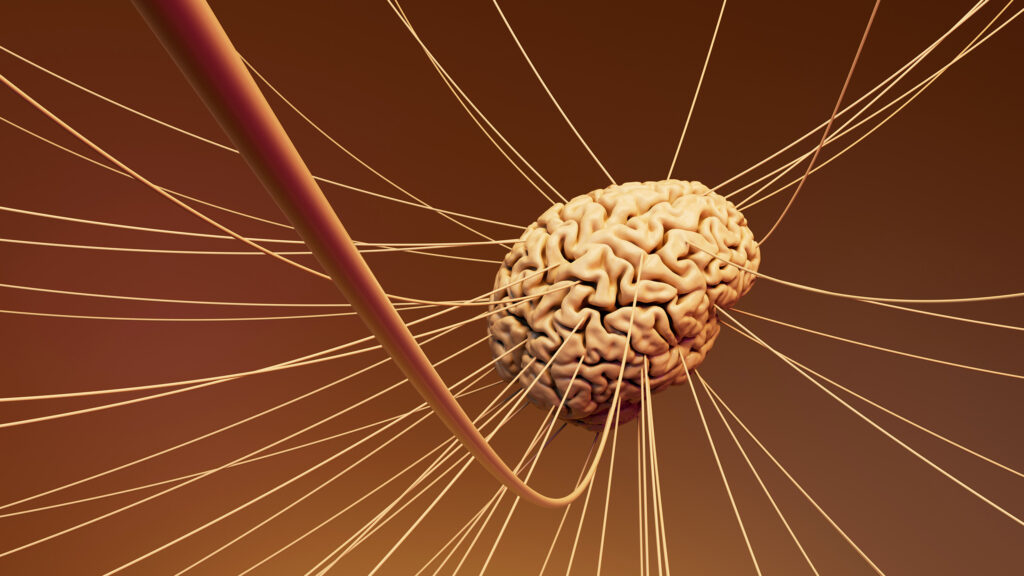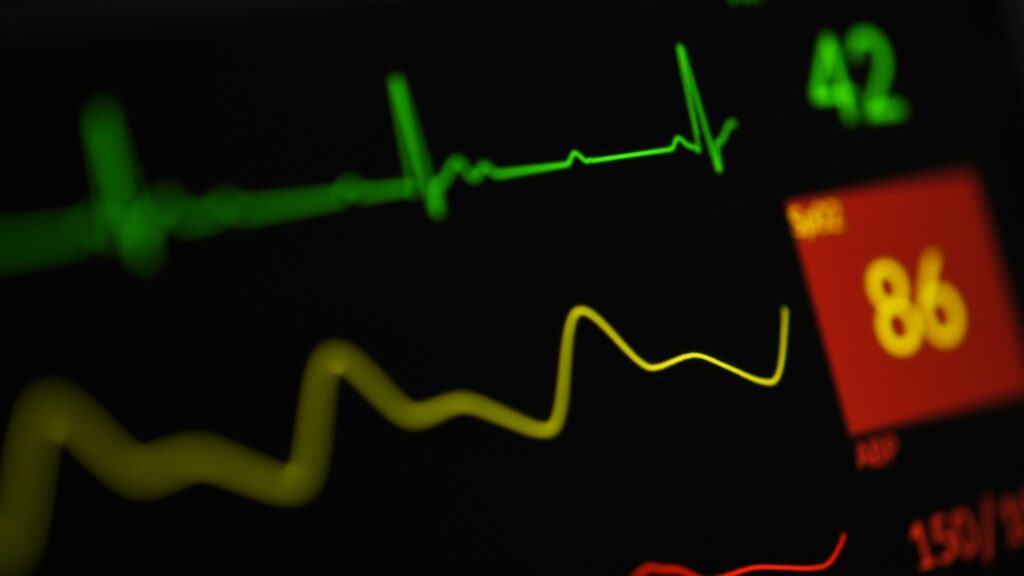Defining Migraine
Migraine is a neurological disease that causes a pounding headache that usually occurs on either side of the head and can last from 4 hours to almost 72 hours. Headaches are divided into two categories; primary and secondary. Migraine comes under the primary category which means that it is NOT caused by an underlying condition and there is no blood test to diagnose it. (1)
Symptoms of migraine
Migraine symptoms vary from person to person, but in most cases, they occur in 4 stages: Prodrome, Aura, Attack, and Postdrome.
Prodrome
24-48 hours before the onset of the migraine, symptoms like fatigue, food cravings or loss of appetite, severe thirst, bloating, constipation, increased urination, and mood changes show up. This acts as a warning sign for those who are about to experience migraines. It is fittingly known as the pre-headache phase.
Aura
An aura is a group of sensory symptoms that stems out of the nervous system and is triggered just before or during a migraine attack and can escalate from 5-10 mins to an hour. One may experience visuals of black dots, wavy lines, flashes of light, tunnel vision, tingling sensation in the arms or legs, discomfort in talking and ringing in the ears, amongst other symptoms.
Attack
A migraine attack starts gradually and then develops into a severe headache which is commonly accompanied by nausea, vomiting and fainting, and sensitivity to light, sound, smell, and touch. A migraine attack can get worse with physical activity and can hinder day-to-day life.
Postdrome
Once the migraine attack has subsided, the after-effects can include a feeling of tiredness and a sense of being wiped out or the contradictory feeling of euphoria and muscle pain among other experiences, food cravings or the opposite feeling of the loss of desire to eat.(2) (3) (4)
Your brain during a migraine
Earlier, some researchers thought that the main reason for migraine was constriction and dilation of the blood vessels on the surface of the brain, leading to throbbing pain. Previously, a migraine was categorised as a vascular disorder, but after many studies were conducted, it is now categorised as a neurological disorder since migraine and its symptoms can be traced back to a more complex nerve pathway in the brain.
Migraine is associated with changes in the brainstem and trigeminal nerve which is a vital pain pathway. Imbalances in pain regulating hormones like serotonin can cause the painful symptoms often noticed during migraine attacks.
The onset of a migraine usually happens with a trigger. These triggers are usually associated with sensory information like the brightness of a sunny day, the intense smell of perfume or the loud pitch of traffic noises. Although these may appear normal to most people, for those who are prone to migraine, these symptoms seem like an assault. As a reaction to these prompts, the brain signals the electrical system to misfire on all cylinders. This causes changes in the blood flow to the brain affecting the nerves and pain is inflicted.
Other possible factors include – dip in magnesium levels, atypical calcium channels on neurons, changes in the mitochondria and genetic unfamiliarity. When signalled, the neurons communicate via the trigeminal nerves that start from the brainstem and travel to the sinuses, forehead, face, teeth, eyes and the blood vessels present on the surface of the brain. The blood vessels then react by either expanding or dilating. This then manoeuvres the surface of the brain also known as “spreading cortical depression”. It can be compared to a slow onset of a thunderstorm and travels from the back to the front of the brain. This further shrinks the blood vessels, limiting the flow of the oxygen. Some researchers also believe that visual auras may occur as a result of cortical depression.
When the brainstem is triggered, the brain reacts by releasing chemicals known as neuropeptides, these include serotonin, noradrenalin, prostaglandins and more. These hormones then advance to meninges (the outer layer of the brain) which results in inflammation and swelling of blood vessels around the brain to increase the blood flow. This is a plausible reason behind the experience of severe pain during migraine. This pain can be felt around your eyes, forehead, neck, sinuses and face. These neuropeptides are also capable of sending signals to the part of the brain which is in charge of the appetite, causing nausea and in some cases vomiting also.
Around 80% of people who suffer migraines also experience cutaneous allodynia – where articles like earring, necklace, ties, sunglasses become painful. Some also complain that their hair hurts. The inflammation that occurs due to the chemical reaction is responsible for this phenomena.
The commencing migraine pain caused when the neurons are activated in the brainstem further moves to a second stage. In this stage, the central nervous system gets involved and turns hypersensitive.
One way of stopping the pain entering stage two is by consuming medications which are prescribed by the doctor. Medication constricts the blood vessels and obstructs the pain circulation. The medication is less effective when the migraine enters the second stage. Once it reaches the central nervous system, the migraine pain can last for up to 72 hours before the nervous system and brain can quiet down.
What causes migraines?
Although the exact cause of a migraine is not fully understood, genetics and environment play a crucial role. Here are some triggers of migraine to look out for: (5)
Free Radicals & Oxidative stress: Oxidative stress in the body occurs when there is an imbalance of free radicals and antioxidants. In a healthy situation, antioxidants give out electrons to free radicals in order to stabilise them. When there are not enough electrons to stabilise the free radical, they can cause damage to the cells by reacting with molecules. Unhealthy blood cells are not only harmful to the body but they restrict healthy oxygenated blood flow to the brain, causing migraine attacks. Oxidative stress is caused by mental stress, sleep deprivation, lack of good quality sleep and poor eating habits. The American Headache Society’s Dr. Jonathan Borkum, Ph.D.,also posits that migraines could be the brain’s protective repair mechanism against oxidative stress. (6) (7)
A study suggests that ROS can cause oxidative damage to DNA, lipids, and proteins. Oxidants may also render pathogenic processes susceptible by impairing the functions of cytoprotective proteins, such as metabolic enzymes and cell membrane transporters. Since guanine has the lowest ionization potential amid the DNA constituents, it can be largely influenced by the actions of free radicals. The oxidation product (8-OHdG) thus generated is one of the most common biomarkers of oxidative stress, mitochondrial dysfunction, and impaired metabolism. Mounting evidence points towards the role of mitochondrial functioning, altered energy metabolism, and oxidative stress in migraine.

Stress: Stress can activate the sympathetic nervous system to trigger stress hormones like adrenaline and raise blood pressure in some cases. High blood pressure indicates the narrowing down of blood vessels. The heart beats faster. When there is an imbalance in the rhythm of the blood flowing in and out of your heart, it could cause an additional strain on the blood vessels to carry out the task and the quality of oxygenated blood reaching the brain is compromised. High stress is conducive to elevated cortisol levels. The stress hormone, cortisol, is inversely related to the happy hormone, serotonin. Cortisol can curb serotonin production. Low levels of serotonin are connected with migraines. Serotonin is known to stabilise mood and well-being, but its key function is to send messages to the nerve cells. A drop in serotonin levels triggers the central nervous system to narrow blood cells. Narrow blood cells carry less amount of oxygen to the brain to carry out its functions and further cause migraine.
Being in a constant state of stress can lead to spontaneous migraine attacks. (Read more about the sympathetic and parasympathetic nervous system and the stress response in our blog.)
The American Headache Society indicates that in 4 out of 5 people with migraines, stress has emerged as a trigger. Research also suggests that relaxation, subsequent to the phase of intense stress has also been identified as a plausible migraine trigger. It is called the ‘let-down effect’.
In nearly 70% of individuals who suffer migraine attacks, stress was found as one of the many triggers. Those suffering from chronic migraine reported high levels of stress. Endogenous (hormonal) and exogenous (physical) or psychological stressors act as a load on the disease. Migraine is linked with many brain diseases that are connected to stress and probable contributing factors like anxiety and depression. When there is an escalation in the recurrence of the stressors, the allostatic response that is responsible for maintaining a stable state of the brain becomes overworked. This increases the wear and tear, also known as allostatic load on the brain and impacts its network, both operatively and structurally. During the interictal phase (the gap when no migraine attack occurs), the brain is imperturbable because of two reasons – A dip in inhibitory neurotransmitters or a rise in excitatory neurotransmitters in the cortical regions. Basal ganglia – a group of subcortical nuclei in charge of motor control plays a key role in managing pain. When stress responses are diminished, it results in the deactivation of medial prefrontal cortex activity. Multiple brain changes reflect alterations in the migraine brain that may be related to the repetitive nature of the disease state, a genetic predisposition, or all of the above.
Hormonal changes in women: Almost 60-70% of women experience migraine and the onset of it is quite frequent around their menstrual cycle. The two dominant female sex hormones are – estrogen and progesterone. Produced in the ovaries, estrogen plays an important role in regulating menstrual cycles, puberty, bone health, heart health, skin, and reproduction. Progesterone prepares the body for pregnancy when the egg is fertilized. There is a significant drop in estrogen levels before and during the menstrual cycle, pregnancy and menopause which could trigger migraine headaches. (8) (9) (10) Though the scientific community is still fully trying to understand the specific role of estrogen, a study found that the prevalence of migraines in male-to-female transgender individuals taking estrogen therapy was similar to that of migraines in females, and far inflated than that in males.
Sleeping patterns: Sleep and the stress response exploit the same pathway: the HPA (hypothalamic-pituitary-adrenal) axis. Continuous unhealthy sleep schedules can thus increase levels of stress hormones and increase the risk of lifestyle diseases.
Research: strongly indicates a relationship between sleeping problems and headache disorders, including migraines. Sleep deprivation has also been associated with increase in the severity and recurrence of migraine.
Sleep and headaches: share the regions of the brain that regulate them – the most prominent of these are the ventrolateral periaqueductal grey and the posterior hypothalamus. Research also suggests that lack of sleep reduces the pain threshold.
A night of uninterrupted, good-quality sleep can reduce inflammation, stress levels, and migraines.
What role does sugar play?
To understand the role of sugar in migraines, one needs to understand glucose metabolism. Insulin is a hormone created by the pancreas that controls the amount of glucose in a person’s bloodstream at any given moment. It helps store glucose in the liver, fat, and muscles, and regulates the body’s metabolism of carbohydrates, fats, and proteins. After eating, blood sugar levels rise. Insulin released by the pancreas helps the cells to absorb blood sugar for energy and storage. With this absorption, glucose levels in the bloodstream begin to decline. The pancreas then produces glucagon, a hormone that prompts the liver to release stored sugar, glycogen. This interaction of glucagon and blood sugar ensures stable blood glucose levels in the body and the brain. The cells of individuals who have insulin resistance don’t respond well to insulin, barring glucose from entering them with ease. The glucose level in their blood rises over time even as their body produces more insulin as the cells resolutely resist insulin.
Glycemic variability can include episodes of hyperglycaemia (high blood glucose) as well as hypoglycaemia (low blood glucose). Glucose variability offers insights into the daily fluctuations in blood sugar levels and tells us how often an individual’s blood sugar levels are significantly above or below the target/ideal range.
Consuming a high-sugar meal can cause ‘reactive hypoglycaemia‘ because the sudden rise in blood glucose from the sweets stimulates an overproduction of insulin, which in turn makes the blood glucose levels fall too low. The brain receiving insufficient glucose causes most of the symptoms of hypoglycaemia, including migraine.
Blood sugar fluctuations are connected with changes in the levels of the hormones epinephrine and norepinephrine. These hormones are responsible for constricting the blood vessels in the brain and causing discomfort in the form of migraines.
A study conducted to interpret the increase of plasma glucose level during the migraine attack concluded that those with or without aura symptoms, when faced with spontaneous migraine attack showed higher plasma glucose values. More studies are being conducted to understand the underlying mechanisms.
Studies also suggest that insulin metabolism is altered in individuals with migraine. Insulin levels were found to be higher in individuals with migraine.
Research shows that the hypothalamus may be responsible for gradual development of chronic migraine through the modulation of appetite stimulant (orexigenic) peptides like neuropeptide Y. Patients with chronic migraine are more prone to developing insulin resistance which increases the risk of type 2 diabetes as well. This can occur due to damaged pancreatic β-cell (beta-cell) function and impairment of GLP-1 (glucagon-like peptide-1) release post meals. The study also determined that fasting glucose levels were higher in those who experienced migraine.
Ways to deal with migraines
Reducing glucose variability can significantly improve migraine symptoms and reduce the sudden onset of the same. High GV values are also associated with increased oxidative stress and vice versa. A diet high in certain fruits such as berries, apples, vegetables, nuts, legumes, whole grains, olive oil and other foods rich in antioxidants can help reduce oxidative stress in the body. This not only helps in combating oxidative stress but also helps in reducing glucose variability. A study also suggests that restricting carbohydrates at breakfast can improve glycemic variability. According to a study, an increase in non-exercise physical activity can enhance glycemic control. Adhering to a routine with your exercise, diet, and sleep, monitoring your blood sugar levels often and keeping a written log of your glucose readings and the factors that influence them can help to maintain the levels in a healthy range.
Pair the right carbs with a good source of protein, fat, and/or fibre as they help slow down the absorption of sugar into the bloodstream.
Skipping meals can reduce your sugar levels and trigger hunger-headache or migraine. Additionally, there are chances that you indulge in a subsequent carb-heavy meal, giving rise to an imbalance in blood sugar levels, which can also cause migraines. (8) (9)
Conclusion
Migraines are a chronic disease worldwide – a complex biochemical dysfunction attributed to the impairment of trigeminal and hypothalamic pathways. Studies suggest that they are hormonally mediated due to their higher incidence in women. Estrogen has been commonly implicated in migraine pathogenesis, yet its exact role in the pathophysiology of migraines is yet to be fully understood. Serotonin also plays an important role in the onset of migraines. Disruption of glucose metabolism has been reported in migraine. While multiple factors can trigger a migraine, monitoring blood sugar levels and glucose variability can help in staying aware of migraines triggered by sugar.
Disclaimer: The contents of this article are for general information and educational purposes only. It neither provides any medical advice nor intends to substitute professional medical opinion on the treatment, diagnosis, prevention or alleviation of any disease, disorder or disability. Always consult with your doctor or qualified healthcare professional about your health condition and/or concerns and before undertaking a new health care regimen including making any dietary or lifestyle changes.








